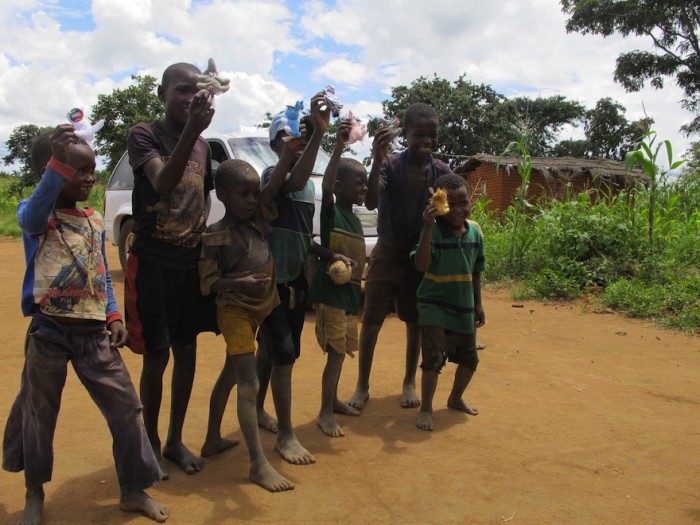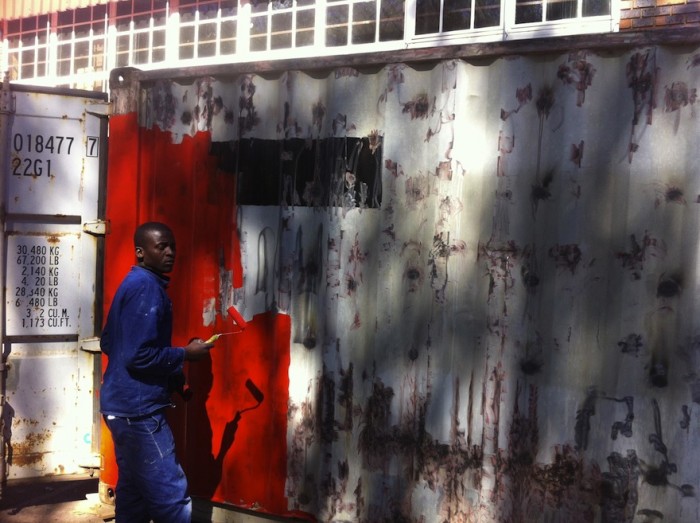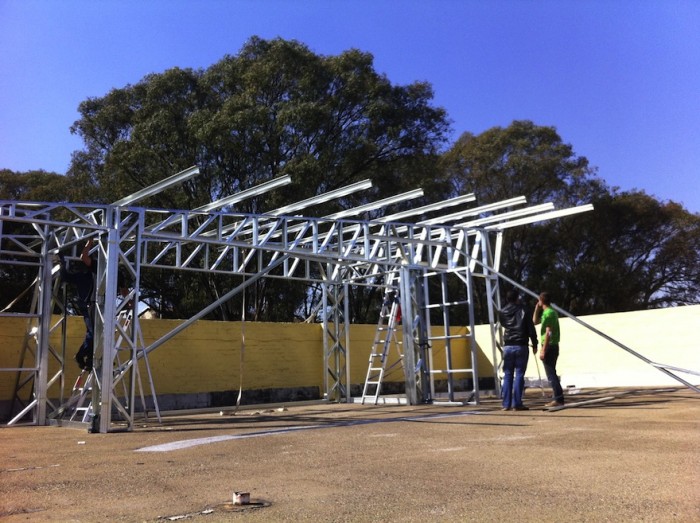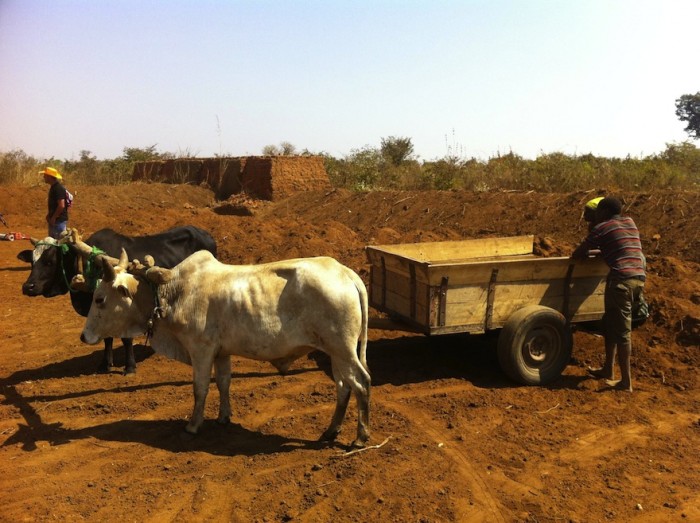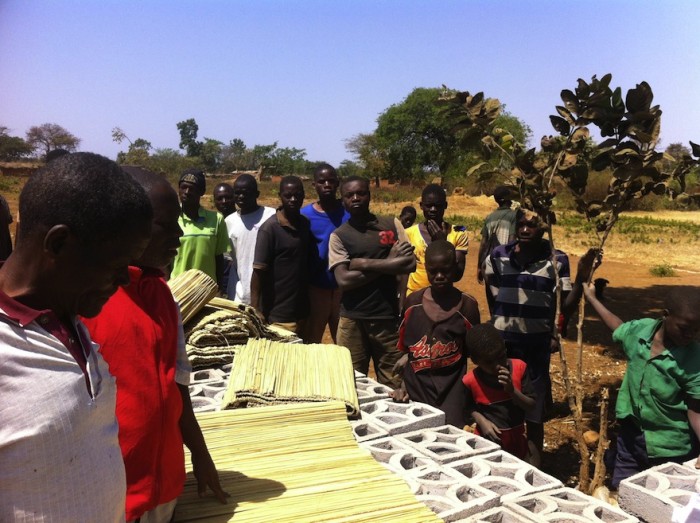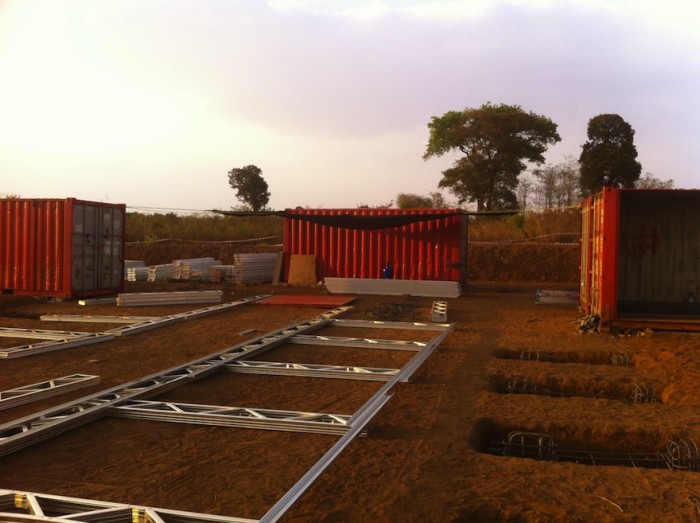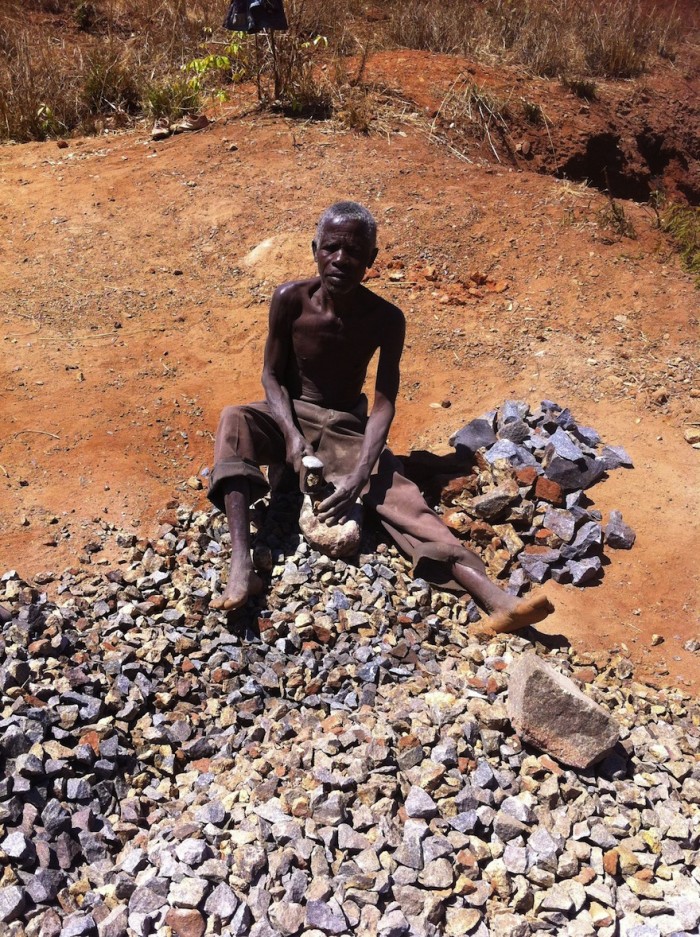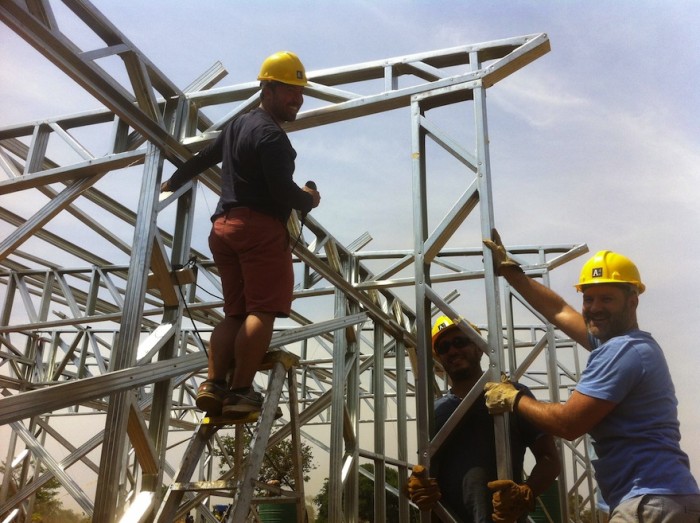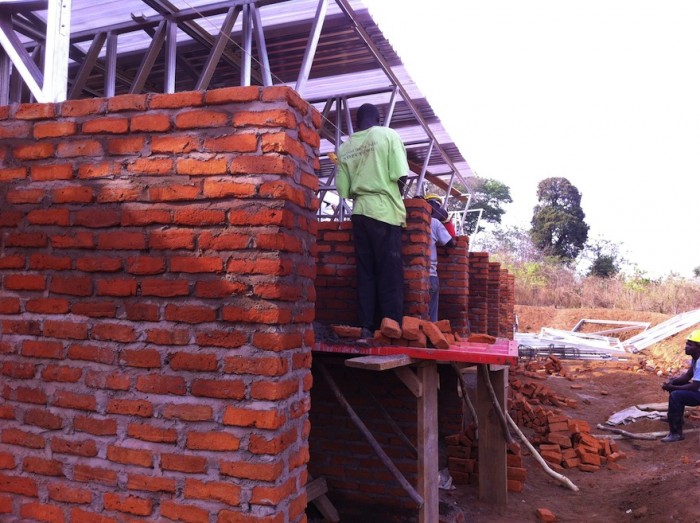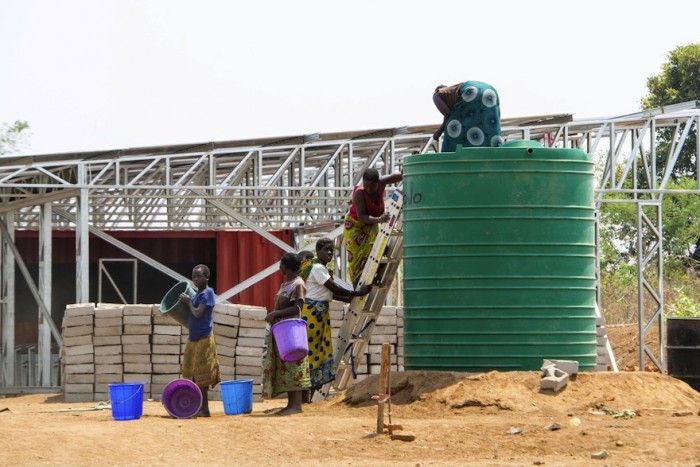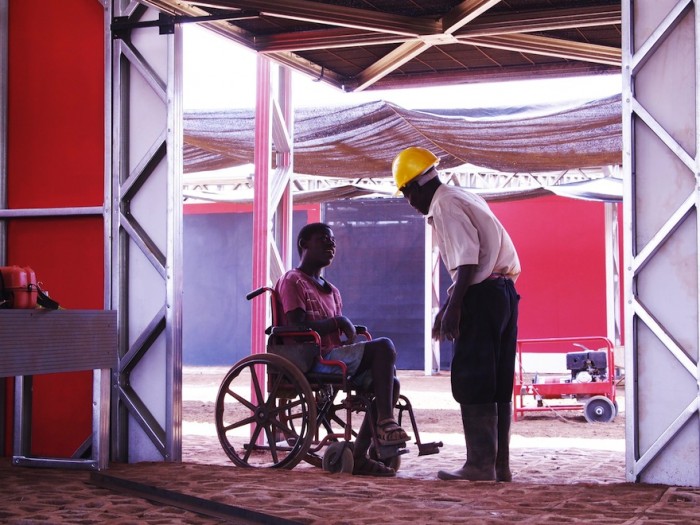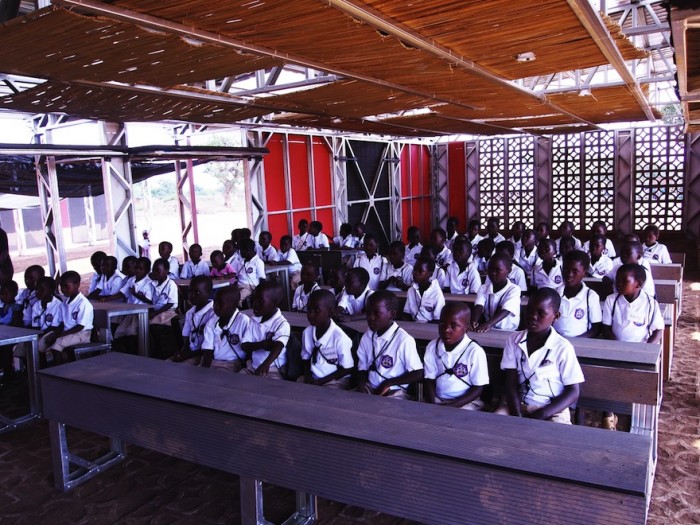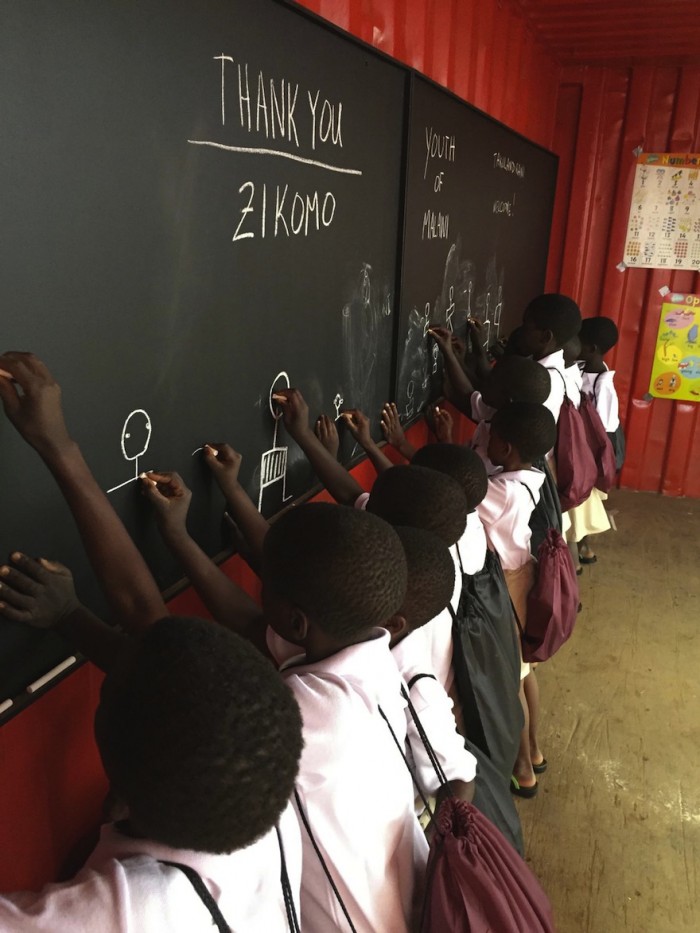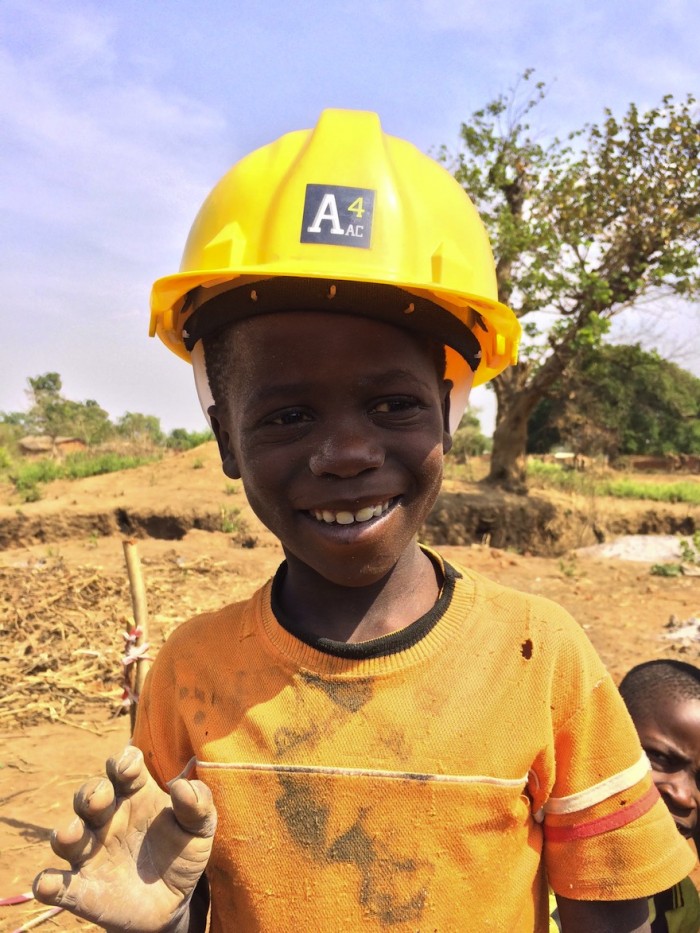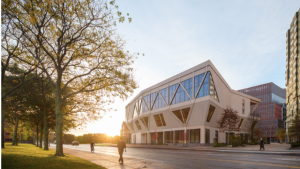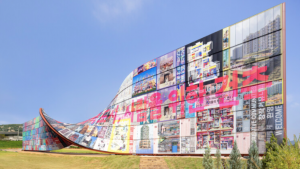We reported about Architecture for a Change's design for a prefabricated school in north-western Malawi back in June, when the three-man team were still manufacturing it in their workshop in Johannesburg. We're happy to report that construction of the school has now been completed – a process as innovative as the design itself.
Most elements of the structure for the Legson Kayira Community Center and Primary School were manufactured off site, including four shipping containers that were sliced into, insulated and repurposed into classrooms. When it came time to transport the containers to Malawi by truck, they packed them with all the pre-made elements, including the roof, rebar for the foundations and specially designed screens for the exterior walls.
The architects worked with Youth of Malawi, a US non-profit, to create the environmentally sustainable and cost-effective school where 120 children in the rural village of Chimphamba are now taught. Here, the three architects at A4AC, as the studio is called – Anton Bouwer, Dirk Coetser and John Saaiman – tell us about the process as the school was assembled out of its many different parts.

